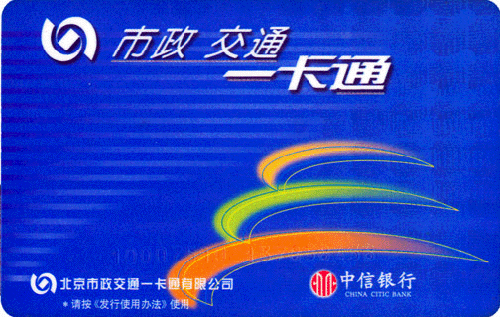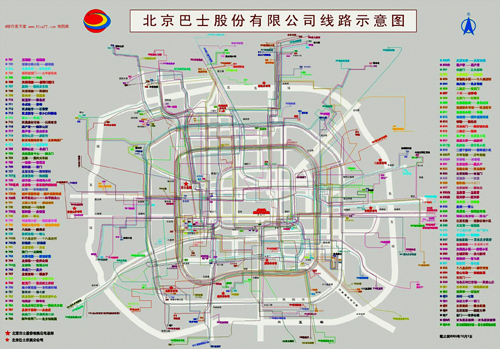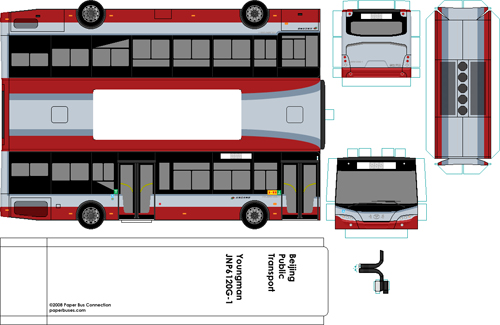Hitting back at BJ's bus whingers
There’s something about travelling that really turns me on. It’s like the rate of change in your life goes on a fast-forward mechanism, accelerating the number of experiences that push through your already-overcrowded brain so that you end up over-dosing on reality.
I’m not just talking about jumping on a plane from one side of the world to another; even going on a subway train or a bus has a certain joy about it.
Ah, buses. Don’t you just love them! Yeah, they may be dirty, overcrowded and smelly, but they are invariably an experience – whether good or bad – that adds to your everyday living-life-to-the-fullest index.
I have to say that here in Beijing I use the buses a lot. And it always annoys me when Western friends of mine whine on about how complicated they are and that they only take the subway or taxis as they wouldn’t be able to cope with the city’s bus system.
What a load of moaning minnies!
Beijing’s bus system is actually quite well thought out, once you get the hang of it. Take the numbering system for instance: Bus routes 1-132 cover the inner city (inside the Third Ring Road that is) with 101-114 using trolleybuses. Lines 200-215 are night buses; 300-499 extend beyond the Third Ring Road to the inner suburbs; 500-799 run through both the urban core and suburbs; while 900-999 go to distant suburbs.
Unlike the subway system that charges ¥2.00 to go anywhere (apart from on the Airport Express), buses start at ¥0.40 for the first 10 km, and then go up by ¥0.40 for each additional 5 km – except for express buses that start at ¥0.80.
There are some 28,000 buses running on 882 bus lines and the easiest way to travel on them (as well as on the subway system) is to purchase a Yikatong - "one card pass" - similar to Hong Kong's Octopus card, Singapore's EZ-Link, or the Oyster Card used by TfL in London - that actually works out a lot cheaper than paying for one-off journeys.

Buses come in all shapes and sizes - double deckers, bendy-buses, trolley buses and ordinary single deckers, but every one seems different in some way.
Some you enter at the front and leave at the rear; some you enter at the middle and leave at the front or rear; some you pay or swipe your Yikatong at the drIver’s end; some you have to reswipe your card when you get off (to avoid being charged the fare for the entire trip). Some have a conductor who can accept cash payments, while others have a cash box placed next to the driver and all have one, two or three Yikatong swipe machines.
If you don’t speak Chinese, then life can be a bit problematic in working out the bus routes. But I have no sympathy for people who use that as an excuse.
Sure, the official bus map is about as much use as a dead herring and I have never, ever, seen anyone use one. (In fact I have never actually seen one for real except when talked about on the internet. Even zooming in to high res versions of it leaves one feeling totally confused.)

But those friendly managers at Beijing Public Transport Holdings Ltd have done their level best to help westerners cope with their transport system. Honest they have! OK, maybe their English language interactive bus map hasn’t actually worked in well over a year to my certain knowledge…
… but that is surely no reason to give up on the system!
So let me give a few helpful hints to show how easy it is to get from A to B…
First things first; there are plenty of places on the web where you can get lists of buses that pass the subway stations. Take Wikipedia for instance…
or travelchina.org, which is idiot-proof in that it also even tells you which exit to take from the station…
So, armed with this knowledge, find your destination on a map of Beijing and find the nearest subway station to it. Once you have this basic information you can check out the routes of each of the buses listed as going to that station by going to a really useful web site called http://www.bjbus.com. By doing a comparison of the non-working English language section with the fully working Chinese version, you can work out what each of the buttons means.
Say we have discovered that the 419 bus goes past the nearest station. By entering the bus number into the correct search box we can straight away see if that bus also goes to our destination.
A bit of trial and error is now in order. The 419 doesn’t go? OK try another bus from that same subway station until you find one that does. Now, if you click on the bus stop marked on the map at your destination you get given a whole load of useful information….
Yeah yeah, happy whingers – I know it is in Chinese, but now we turn to that ever-so-useful translation site of Mr Google.
And what do we find? The first line gives the name of the bus stop; the second confirms the bus number; and the third tells you the number of the bus stop on the route that this one is on. So far dead easy? OK. This is where the fun now starts!
If we do a copy and paste job of the bus stop name back into the http://www.bjbus.com/home/map_section.php site, up pops a list on the left of every bus that goes to that bus stop. Wow!
So now you can either paste that bus number into the bus-number-look-up section we went to earlier on, or be even more adventurous and paste in the name of your nearest bus stop and the destination bus stop into yet another look-up function on the site to be told in words of one syllable how to get from A to B.
Could it really be any easier?
Ah, I hear those self same whingers saying: how do we know where we are on the bus route if we have never been there, and no one on board the bus speaks a word of the Queen’s vernacular?
Again, not a problem as long as you are not blind. Firstly, every bus has a list of the bus stops displayed in both Chinese and Pinyin.
And every bus stop has its name in Chinese and Pinyin printed at the top (albeit that some are more difficult to read than others).
So what could be easier than finding out where you got on and counting the number of bus stops to where you want to get off. (All buses stop at all the stops. They don’t have an on-request stopping system as used in Europe.)
In addition, many buses even display the next stop in both Chinese and Pinyin on a rolling display together with a recorded announcement…
So, happy whingers – stop complaining and get on board one of BJ’s 28,000+ buses. And who knows, you might one day love them so much that you will want to download one of the many paper cut out models from the web!

Since this was written, bjbus.com has become all but unuseable. Instead, consult your Apple iPhone map, or (with a VPN) consult Google Map - both of which give you all the details you need to know.
